Solutions Manual to accompany Cost Accounting: A Managerial Emphasis 13rd edition 9780136126638
$38.00
This is a digital format book: Solution manual for 13th edition textbook (check editions by ISBN). Textbook is NOT included. Solutions manual ONLY. Instant Download after purchase is made. ISBN number serves reference for correspondent textbook.
ISBN-13: 9780136126638 ISBN-10: 0136126634
- Description
- Reviews (0)
Description
You will receive this product immediate after placing the order
***THIS IS NOT THE ACTUAL BOOK. YOU ARE BUYING the Solution Manual in e-version of the following book***
– The Solution Manual is what most professors use an a reference when making exams for their students, which means there’s a very high chance that you will see a very similar, if not exact the exact, question in the test!
– The file is either in pdf, doc, rtf or zipped in the package and can easily be read on PCs and Macs.
– Delivery is INSTANT. You can download the files IMMEDIATELY once payment is done.
We also faced similar difficulities when we were students, and we understand how you feel.
But now, with the Solutions Manual to accompany Cost Accounting: A Managerial Emphasis 13rd edition 9780136126638, you will be able to
* Anticipate the type of the questions that will appear in your exam.
* Reduces the hassle and stress of your student life.
* Improve your studying and also get a better grade!
* Get prepared for examination questions.
* Can save you time and help you understand the material.
This is the quality of service we are providing and we hope to be your helper.
Delivery is in the next moment. Solution Manual is accurate.
If you have any questions, or would like a receive a sample chapter before your purchase, please contact us at inquiry@testbanksafe.com
CHAPTER 1
THE ACCOUNTANT’S ROLE IN THE ORGANIZATION
See the front matter of this Solutions Manual for suggestions regarding your choices of assignment material for each chapter.
1-1 Management accounting measures, analyzes and reports financial and nonfinancial information that helps managers make decisions to fulfill the goals of an organization. It focuses on internal reporting and is not restricted by generally accepted accounting principles (GAAP).
Financial accounting focuses on reporting to external parties such as investors, government agencies, and banks. It measures and records business transactions and provides financial statements that are based on generally accepted accounting principles (GAAP).
Other differences include (1) management accounting emphasizes the future (not the past), and (2) management accounting influences the behavior of managers and other employees (rather than primarily reporting economic events).
1-2 Financial accounting is constrained by generally accepted accounting principles. Management accounting is not restricted to these principles. The result is that
- management accounting allows managers to charge interest on owners’ capital to help judge a division’s performance, even though such a charge is not allowed under GAAP,
- management accounting can include assets or liabilities (such as “brand names” developed internally) not recognized under GAAP, and
- management accounting can use asset or liability measurement rules (such as present values or resale prices) not permitted under GAAP.
1-3 Management accountants can help to formulate strategy by providing information about the sources of competitive advantage—for example, the cost, productivity, or efficiency advantage of their company relative to competitors or the premium prices a company can charge relative to the costs of adding features that make its products or services distinctive.
1-4 The business functions in the value chain are
- Research and development—generating and experimenting with ideas related to new products, services, or processes.
- Design of products, services, and processes—the detailed planning and engineering of products, services, or processes.
- Production—acquiring, coordinating, and assembling resources to produce a product or deliver a service.
- Marketing—promoting and selling products or services to customers or prospective customers.
- Distribution—delivering products or services to customers.
- Customer service—providing after-sale support to customers.
1-5 Supply chain describes the flow of goods, services, and information from the initial sources of materials and services to the delivery of products to consumers, regardless of whether those activities occur in the same organization or in other organizations.
Cost management is most effective when it integrates and coordinates activities across all companies in the supply chain as well as across each business function in an individual company’s value chain. Attempts are made to restructure all cost areas to be more cost-effective.
1-6 “Management accounting deals only with costs.” This statement is misleading at best, and wrong at worst. Management accounting measures, analyzes, and reports financial and non-financial information that helps managers define the organization’s goals, and make decisions to fulfill them. Management accounting also analyzes revenues from products and customers in order to assess product and customer profitability. Therefore, while management accounting does use cost information, it is only a part of the organization’s information recorded and analyzed by management accountants.
1-7 Management accountants can help improve quality and achieve timely product deliveries by recording and reporting an organization’s current quality and timeliness levels and by analyzing and evaluating the costs and benefits—both financial and non-financial—of new quality initiatives such as TQM, relieving bottleneck constraints or providing faster customer service.
1-8 The five-step decision-making process is (1) identify the problem and uncertainties (2) obtain information (3) make predictions about the future (4) make decisions by choosing among alternatives and (5) implement the decision, evaluate performance and learn.
1-9 Planning decisions focus on (a) selecting organization goals, predicting results under various alternative ways of achieving those goals, deciding how to attain the desired goals, and (b) communicating the goals and how to attain them to the entire organization.
Control decisions focus on (a) taking actions that implement the planning decisions, and (b) deciding how to evaluate performance and providing feedback and learning to help future decision making.
1-10 The three guidelines for management accountants are
- Employ a cost-benefit approach.
- Recognize behavioral and technical considerations.
- Apply the notion of “different costs for different purposes”.
1-11 Agree. A successful management accountant requires general business skills (such as understanding the strategy of an organization) and people skills (such as motivating other team members) as well as technical skills (such as computer knowledge, calculating costs of products, and supporting planning and control decisions).
1-12 The new controller could reply in one or more of the following ways:
(a) Demonstrate to the plant manager how he or she could make better decisions if the plant controller was viewed as a resource rather than a deadweight. In a related way, the plant controller could show how the plant manager’s time and resources could be saved by viewing the new plant controller as a team member.
(b) Demonstrate to the plant manager a good knowledge of the technical aspects of the plant. This approach may involve doing background reading. It certainly will involve spending much time on the plant floor speaking to plant personnel.
(c) Show the plant manager examples of the new plant controller’s past successes in working with line managers in other plants. Examples could include
- assistance in preparing the budget,
- assistance in analyzing problem situations and evaluating financial and nonfinancial aspects of different alternatives, and
- assistance in submitting capital budget requests.
(d) Seek assistance from the corporate controller to highlight to the plant manager the importance of many tasks undertaken by the new plant controller. This approach is a last resort but may be necessary in some cases.
1-13 IMA stands for the Institute of Management Accountants. It is the largest association of management accountants in the United States. The CMA (Certified Management Accountant) is the professional designation for management accountants and financial executives. It demonstrates that the holder has met the admission criteria and demonstrated the competency of management accounting knowledge required by the IMA.
1-14 The Institute of Management Accountants (IMA) sets standards of ethical conduct for management accountants in the following areas:
- Competence
- Confidentiality
- Integrity
- Credibility
1-15 Steps to take when established written policies provide insufficient guidance are
(a) Discuss the problem with the immediate superior (except when it appears that the superior is involved).
- Clarify relevant ethical issues by confidential discussion with an IMA Ethics Counselor or other impartial advisor.
- Consult your own attorney as to legal obligations and rights concerning the ethical conflicts.
1-16 (15 min.) Value chain and classification of costs, computer company.
| Cost Item | Value Chain Business Function | |
| a.
b. c. d. e. f.
g. h. |
Production
Distribution Design of products, services or processes Research and Development Customer Service or Marketing Design of products, services or processes (or Research and Development) Marketing Production |
|
1-17 (15 min.) Value chain and classification of costs, pharmaceutical company.
| Cost Item | Value Chain Business Function | |
| a.
b. c. d. e. f. g. h. |
Design of products, services or processes
Marketing Customer Service Research and Development Marketing Production Marketing Distribution |
|
- (15 min.) Value chain and classification of costs, fast food restaurant.
| Cost Item | Value Chain Business Function | |
| a.
b. c. d. e. f. g. h. |
Production
Distribution Marketing Marketing Marketing Production Design of products, services or processes Customer service |
|
1-19 (15 min.) Value chain, supply chain, and key success factors.
| Change in
Management Accounting |
Key Theme |
| a.
b. c. d. e. |
Value-chain analysis
Key success factors (cost and quality) Key success factors (cost) Supply-chain analysis Key success factors (time) |
1-20 (10-15 min.) Planning and control decisions.
| Action | Decision | |
| a.
b. c. d. e. |
Planning
Control Control Planning Planning |
|
1-21 (15 min.) Five-step decision-making process, manufacturing.
| Action | Step in Decision-Making Process |
| a.
b. c. d. e. f. g.
|
Obtain information
Make predictions about the future Identify the problem and uncertainties Implement the decision, evaluate performance, and learn Make predictions about the future Make decisions by choosing among alternatives Obtain information |
1-22 (15 min.) Five-step decision-making process, service firm.
| Action | Step in Decision-Making Process |
| a.
b. c. d. e. f. g. . |
Obtain information
Identify the problem and uncertainties Make predictions about the future Implement the decision, evaluate performance, and learn Make predictions about the future Obtain information Make decisions by choosing among alternatives |
1-23 (10–15 min.) Professional ethics and reporting division performance.
- Miller’s ethical responsibilities are well summarized in the IMA’s “Standards of Ethical Conduct for Management Accountants” (Exhibit 1-7 of text). Areas of ethical responsibility include the following:
- competence
- confidentiality
- integrity
- credibility
The ethical standards related to Miller’s current dilemma are integrity, competence and credibility. Using the integrity standard, Miller should carry out duties ethically and communicate unfavorable as well as favorable information and professional judgments or opinions. Competence demands that Miller perform her professional duties in accordance with relevant laws, regulations, and technical standards. Credibility requires that Miller report information fairly and objectively. Miller should refuse to book the $200,000 of sales until the goods are shipped. Both financial accounting and management accounting principles maintain that sales are not complete until the title is transferred to the buyer.
- Miller should refuse to follow Maloney’s orders. If Maloney persists, the incident should be reported to the corporate controller. Support for line management should be wholehearted, but it should not require unethical conduct.
1-24 (15 min.) Planning and control decisions, Internet company.
- Planning decisions
- Decision to raise monthly subscription fee
- Decision to upgrade content of online services (later decision to inform subscribers and upgrade online services is an implementation part of control)
- Decision to decrease monthly subscription fee
Control decisions
- Decision to inform existing subscribers about the rate of increase—an implementation part of control decisions
- Dismissal of VP of Marketing—performance evaluation and feedback aspect of control decisions
- Other planning decisions that may be made at WebNews.com: decision to raise or lower advertising fees; decision to charge a fee from on-line retailers when customers click-through from WebNews.com to the retailers’ websites.
Other control decisions that may be made at WebNews.com: evaluating how customers like the new format for the weather information, working with an outside vendor to redesign the website, and evaluating whether the waiting time for customers to access the website has been reduced.
Be the first to review “Solutions Manual to accompany Cost Accounting: A Managerial Emphasis 13rd edition 9780136126638”
You must be logged in to post a review.

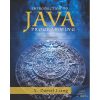




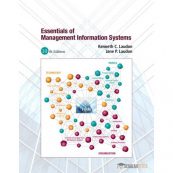
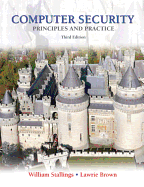



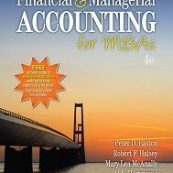
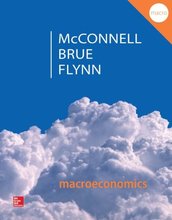
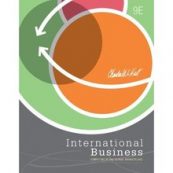
Reviews
There are no reviews yet.